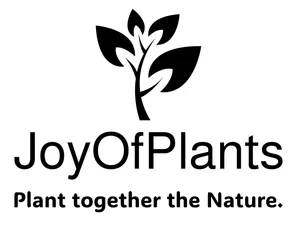
Hibiscus Double Patal Vibrant Flower Plant & Tree (1.5-3.5 Ft Height) For S..More
₹449
₹899
50% OffLowest Prices of the Year!
00H:09M:06S
View Available Offers
Final Price inclusive of all taxes

Lowest Prices of the Year!
Extra 50% Off
Sale ends in
00H : 09M : 06S
size
FREE SIZE
Product Information
Brand
JOYOFPLANTS
Product Type
Live Flower Plant
Life Cycle
Alltime
Suitable Location
Outdoor
Hybrid
Yes
Country_of_Origin
India
Product Description
The Hibiscus plant (genus: Hibiscus) is a popular flowering plant that belongs to the Malvaceae family. Known for its large, vibrant flowers, Hibiscus plants are grown worldwide as ornamental shrubs and small trees. The flowers are often striking in color, with shades ranging from red, pink, yellow, and white to purple and orange.
Here’s a detailed description of the Hibiscus plant:
Appearance:
Leaves: The leaves of the Hibiscus plant are typically glossy, green, and alternate along the stems. They are usually ovate or lance-shaped, with serrated edges. Some species may have slightly waxy or fuzzy textures on the leaves.
Flowers: Hibiscus flowers are the plant’s most captivating feature. The blooms are large and funnel-shaped, with five overlapping petals that can be smooth or slightly ruffled. Hibiscus flowers are known for their striking colors, with red being the most common, though they can also be found in white, pink, yellow, orange, purple, and even multi-colored variations. The flowers typically last only a day, but new blooms continuously emerge, giving the plant a long blooming season.
Stamens and Pistil: A unique feature of the Hibiscus flower is its prominent central column of long, protruding stamens, which often form a dramatic "stamen cluster" around the pistil (female reproductive part of the flower).
Height and Shape: Hibiscus plants can vary in size depending on the variety. They can be grown as low-growing shrubs, or they can become small trees up to 10–15 feet (3 to 4.5 meters) tall. They typically have an upright, bushy form, but pruning can help maintain the shape.
Growth Conditions:
Light: Hibiscus plants thrive in full sun, requiring at least 6 hours of direct sunlight daily to bloom profusely. In shady conditions, they may produce fewer flowers.
Watering: Hibiscus plants prefer moist, well-drained soil. They need consistent watering but do not like to sit in waterlogged soil. It’s best to water them regularly, especially during the warmer months, but ensure the soil drains well to prevent root rot.
Temperature: Hibiscus plants are sensitive to frost and should be grown in warm, frost-free climates. They thrive in temperatures ranging from 60°F to 90°F (15°C to 32°C). In cooler regions, they can be grown as annuals or in pots and brought indoors during the colder months.
Soil: Hibiscus prefers rich, slightly acidic to neutral soil with good drainage. Loamy soil is ideal, and adding organic matter like compost helps the plant thrive.
Care:
Pruning: Regular pruning helps maintain the plant’s shape, encourages bushier growth, and promotes more flowers. After the blooming season, deadheading (removing spent flowers) can also help to keep the plant healthy.
Fertilizing: Hibiscus plants benefit from regular feeding during the growing season (spring and summer). A balanced fertilizer or one high in potassium can promote healthy blooms and foliage.
Pests and Diseases: Hibiscus plants can attract pests like aphids, mealybugs, and spider mites, so regular monitoring and organic pest control can help. They may also be susceptible to fungal infections, especially if conditions are too humid or waterlogged.
Symbolism and Cultural Significance:
Symbolism: Hibiscus flowers are often symbols of beauty, elegance, and femininity. They are used in various cultures as symbols of life, love, and passion. In some parts of the world, the Hibiscus is associated with friendship and delicate beauty.
Cultural Significance: In Hawaii, the Hibiscus is the state flower and is commonly used in leis and traditional ceremonies. In many Asian cultures, the Hibiscus is also used for medicinal and culinary purposes.
Medicinal and Culinary Uses:
Medicinal Uses: Hibiscus flowers are known for their medicinal properties. They are rich in antioxidants and vitamin C, and in some cultures, Hibiscus tea made from the dried flowers is consumed for its potential health benefits, such as lowering blood pressure and aiding digestion.
Culinary Uses: In some regions, the flowers are used in cooking, such as making jams, jellies, and syrups. The flowers are also used to flavor beverages, including the popular Hibiscus iced tea.
Aesthetic Appeal:
Hibiscus plants are prized for their bold and showy flowers, making them perfect for adding color and vibrancy to gardens, borders, and containers. They can be grown in a variety of settings, from tropical and subtropical gardens to indoor pots in cooler climates.
Whether in gardens, landscapes, or even as potted plants indoors, Hibiscus adds a tropical touch and is beloved for its beauty and easy care once established.
REC: After getting (( VERY VERY IMPORTANT )) the plants, AVOID exposing them to direct sunlight as it can cause leaf BURN. AVOID overwatering your plants. The primary reason for outdoor plant demise is excessive watering.
Planting: Excavate a hole double the size in width and depth compared to the polybag that contains your plant. Fill it up, blending compost with the topsoil. Insert the plant into the newly loosened soil. It is essential to water both Rare Live Plant & Regular (Morning 300ml).
NOTE 1: The plant may appear dry due to transportation time.Joy of plants However, the plant is still healthy because it is an outdoor plant. Place it back in the soil, apply the included fertilizer, water it, and monitor it for a week. It will restore its freshness.
Note 2: image is for reference only. Appearance of actual product may vary based on factors such as climate, age, and height.
✅ Easy To Grow
✅Hybrid Varient
✅Suitable for Indian Climate
✅best plant for garden.
✅Safe and Good Packaging
✅Easy Grow in pot
Here’s a detailed description of the Hibiscus plant:
Appearance:
Leaves: The leaves of the Hibiscus plant are typically glossy, green, and alternate along the stems. They are usually ovate or lance-shaped, with serrated edges. Some species may have slightly waxy or fuzzy textures on the leaves.
Flowers: Hibiscus flowers are the plant’s most captivating feature. The blooms are large and funnel-shaped, with five overlapping petals that can be smooth or slightly ruffled. Hibiscus flowers are known for their striking colors, with red being the most common, though they can also be found in white, pink, yellow, orange, purple, and even multi-colored variations. The flowers typically last only a day, but new blooms continuously emerge, giving the plant a long blooming season.
Stamens and Pistil: A unique feature of the Hibiscus flower is its prominent central column of long, protruding stamens, which often form a dramatic "stamen cluster" around the pistil (female reproductive part of the flower).
Height and Shape: Hibiscus plants can vary in size depending on the variety. They can be grown as low-growing shrubs, or they can become small trees up to 10–15 feet (3 to 4.5 meters) tall. They typically have an upright, bushy form, but pruning can help maintain the shape.
Growth Conditions:
Light: Hibiscus plants thrive in full sun, requiring at least 6 hours of direct sunlight daily to bloom profusely. In shady conditions, they may produce fewer flowers.
Watering: Hibiscus plants prefer moist, well-drained soil. They need consistent watering but do not like to sit in waterlogged soil. It’s best to water them regularly, especially during the warmer months, but ensure the soil drains well to prevent root rot.
Temperature: Hibiscus plants are sensitive to frost and should be grown in warm, frost-free climates. They thrive in temperatures ranging from 60°F to 90°F (15°C to 32°C). In cooler regions, they can be grown as annuals or in pots and brought indoors during the colder months.
Soil: Hibiscus prefers rich, slightly acidic to neutral soil with good drainage. Loamy soil is ideal, and adding organic matter like compost helps the plant thrive.
Care:
Pruning: Regular pruning helps maintain the plant’s shape, encourages bushier growth, and promotes more flowers. After the blooming season, deadheading (removing spent flowers) can also help to keep the plant healthy.
Fertilizing: Hibiscus plants benefit from regular feeding during the growing season (spring and summer). A balanced fertilizer or one high in potassium can promote healthy blooms and foliage.
Pests and Diseases: Hibiscus plants can attract pests like aphids, mealybugs, and spider mites, so regular monitoring and organic pest control can help. They may also be susceptible to fungal infections, especially if conditions are too humid or waterlogged.
Symbolism and Cultural Significance:
Symbolism: Hibiscus flowers are often symbols of beauty, elegance, and femininity. They are used in various cultures as symbols of life, love, and passion. In some parts of the world, the Hibiscus is associated with friendship and delicate beauty.
Cultural Significance: In Hawaii, the Hibiscus is the state flower and is commonly used in leis and traditional ceremonies. In many Asian cultures, the Hibiscus is also used for medicinal and culinary purposes.
Medicinal and Culinary Uses:
Medicinal Uses: Hibiscus flowers are known for their medicinal properties. They are rich in antioxidants and vitamin C, and in some cultures, Hibiscus tea made from the dried flowers is consumed for its potential health benefits, such as lowering blood pressure and aiding digestion.
Culinary Uses: In some regions, the flowers are used in cooking, such as making jams, jellies, and syrups. The flowers are also used to flavor beverages, including the popular Hibiscus iced tea.
Aesthetic Appeal:
Hibiscus plants are prized for their bold and showy flowers, making them perfect for adding color and vibrancy to gardens, borders, and containers. They can be grown in a variety of settings, from tropical and subtropical gardens to indoor pots in cooler climates.
Whether in gardens, landscapes, or even as potted plants indoors, Hibiscus adds a tropical touch and is beloved for its beauty and easy care once established.
REC: After getting (( VERY VERY IMPORTANT )) the plants, AVOID exposing them to direct sunlight as it can cause leaf BURN. AVOID overwatering your plants. The primary reason for outdoor plant demise is excessive watering.
Planting: Excavate a hole double the size in width and depth compared to the polybag that contains your plant. Fill it up, blending compost with the topsoil. Insert the plant into the newly loosened soil. It is essential to water both Rare Live Plant & Regular (Morning 300ml).
NOTE 1: The plant may appear dry due to transportation time.Joy of plants However, the plant is still healthy because it is an outdoor plant. Place it back in the soil, apply the included fertilizer, water it, and monitor it for a week. It will restore its freshness.
Note 2: image is for reference only. Appearance of actual product may vary based on factors such as climate, age, and height.
✅ Easy To Grow
✅Hybrid Varient
✅Suitable for Indian Climate
✅best plant for garden.
✅Safe and Good Packaging
✅Easy Grow in pot
